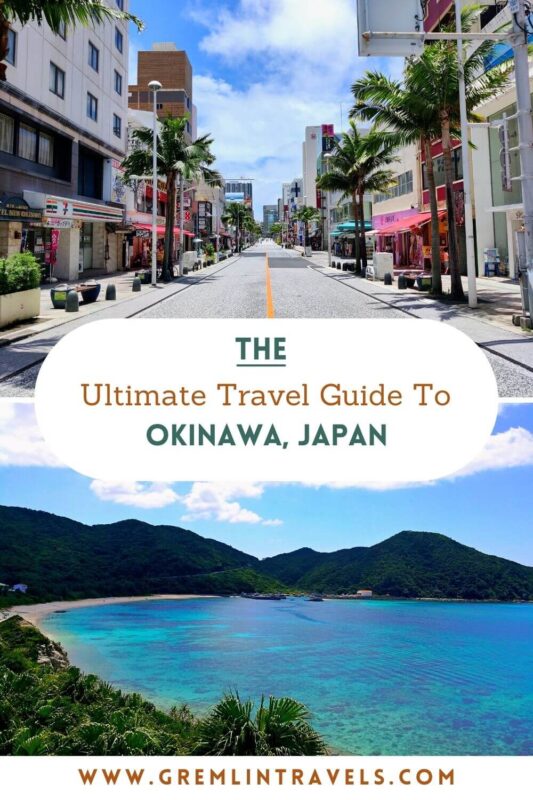Okinawa Island
Travel Guide
Welcome to our Okinawa travel guide, where we explore Japan’s sub-tropical southern island paradise full of turquoise waters, white sand beaches and a culture of its own. A popular holiday spot for Japanese and Asian tourists, Okinawa is relatively unheard of to many international tourists, and its laid-back pace contrasts the bustle of mainland Japan.
When many people think about Japan, the image of idyllic beaches, palm tree-lined streets and stunning underwater worlds don’t come to mind but they do exist and they are in Okinawa, Japan’s southernmost prefecture. While Okinawa is a prefecture covering the most southwestern portion of Japan, it’s main island is also called Okinawa and that’s what we’ll be focusing on in this guide. While many consider Okinawa to be less ‘Japanese’ than much of Japan, its unique Ryukyu culture and strong American influence have combined to create a different side of Japan. There are still vibrant cities and lots of lights but life in Okinawa tends to move slower and days can be spent admiring the incredible natural beauty on offer and taking some time to unwind.
Okinawa Travel Guide Contents
Check out our other Japan Travel Guides:
Hiroshima Travel Guide | Kyoto Travel Guide | Osaka Travel Guide | Tokyo Travel Guide | Sapporo Travel Guide
Okinawa Travel Guide
How to get to Okinawa
The main island of Okinawa is accessible by Naha Airport in the capital city of Naha, located south on Okinawa island. Domestic flights from many of the most major cities in Japan, including Tokyo, fly to Okinawa a few times a day. Direct international flights connect Okinawa with Taiwan, China, South Korea, Singapore, Thailand and Malaysia. Naha airport is a well-equipped and efficient airport with a good selection of restaurants, cafes, shops and services. There are 2 terminals that are connected to each other. Here are the main ways to get from Naha airport to the main areas on Okinawa island:
Monorail – Naha city is connected to Naha airport by the quick and easy monorail service. The monorail runs from 06:00 to 00:00 and departs at least every 15inutes, often more frequently at busy times. It departs from the station opposite the main terminal building and tickets cost a maximum of ¥370 ($2.75) to the last stop (Tedako-Uranishi, 37 min journey time) but around ¥300 ($2.25) to get to the centre of Naha (around 15 minute journey time). The Monorail can get quite busy at peak times but it’s efficient and easy to use. You can purchase tickets from the machines at the station or you can use a Japanese IC card.
Bus – For visitors staying in areas other than Naha on Okinawa island, the best way to travel by public transport is by bus. There are many buses which depart from outside arrivals at Naha Airport and connect to both Naha city as well as some of the most popular destinations on the island, including Onna, Nago and the Churaumi Aquarium. While there are many different buses, no’s 117, 120 and 111 all stop at Naha city and Nago. You can transfer at Naha bus terminal for local buses. Buses generally operate from around 06:00-07:00 until 20:00 but schedules can vary greatly depending on route. Tickets can be bought on board from the driver but be sure to have cash ready. Check the airport website for more details on bus timetables and stops
Taxi – Taxi’s are readily available from outside arrivals at Naha Airport. If you’re staying in a large or well known hotel, it should be enough to tell the driver this but it is a good idea to have the address ready to show, in Japanese if possible, to avoid any issues. Taxi’s in Okinawa and Japan in general are comfortable and reliable. Taxi’s are metered in Okinawa so prices vary but as a guide, a taxi from the airport to Naha city centre will take around 10-15 minutes and cost ¥1500-¥2000 ($11-$15). A taxi to Onna should take around 70 minutes and cost around ¥6000-¥9000 ($45-$67). A taxi to Nago should take around 80 minutes and cost around ¥9000-¥13000 ($67-$97). Taxi fares are generally around 20% higher from 22:00 to 05:00 and you should always have the fare ready in cash, as many taxi’s will not take card payment
Car Hire – Car rental is very common for tourists in Naha, due to the lack of trains and the option to explore more of the island with a car. Cars can be rented online with pick-up at the airport or at desks from within the airport building. There are many car rental companies to choose from including larger global names and smaller Japanese companies. For assistance in languages other than English, it’s advisable to use a larger company such as Times, OTS, Budget or Hertz. There are a range of cars to choose from to suit everyone and terms are standard. Naha Airport is well connected to the rest of the island via the express way, which is the easiest way to get around. Tolls apply across the express way so you can pay as you go or choose one of the ETC options from a car rental company, which saves time. If you are visiting from a country other than Japan, you will need an International Driving Permit to rent a car in Japan
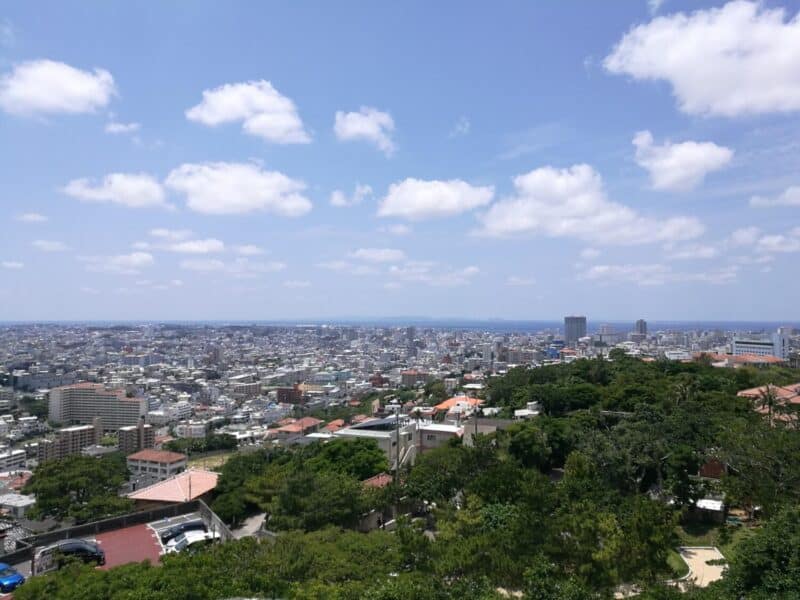
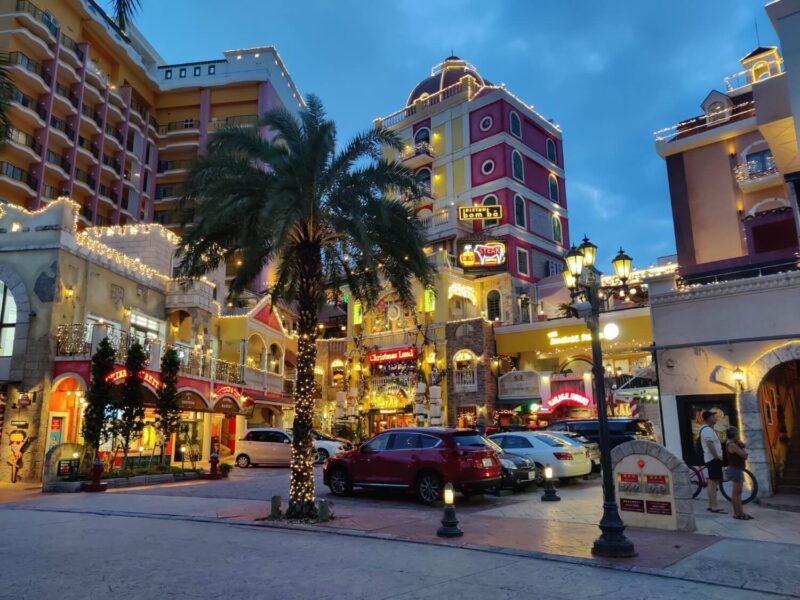
Areas to stay in Okinawa
Okinawa Island is around 106km (66 miles) long and 11km (7 miles) wide so depending on where you stay on the island, your experience can vary greatly. With that in mind, it’s important to choose the best area as a base for your visit, so here is a quick guide to the best places to stay in Okinawa, Japan:
Naha – Okinawa’s capital city, Naha is close to the airport, has plenty of restaurants, shops and bars and even has it’s own monorail line, making getting around the city super easy. There is also a city beach, a bus station with services to most of the island and a ferry port with ferries to the Kerama Islands. This is where we would recommend first time visitors to Okinawa to stay, especially if you want the largest selection of restaurants and convenient public transport
Okinawa – The second-largest city on Okinawa Island, Okinawa city is a good city base if you want to be more central on the island for exploring both the north and south. It has also has easy access to some attractions such as the Botanical Gardens and American Village
Nago – Nago is a great option for first time visitors to Okinawa that want to stay somewhere smaller with a great beach and be close to some of the best attractions on the island, such as the Churaumi Aquarium. It’s much smaller than Naha and Okinawa city but it’s popularity as a tourist resort means there are plenty of Japanese restaurants for those staying in the area
Keramas – Not on Okinawa main island but worth including, the Kerama Islands are good for those who who are returning visitors to Okinawa that want to completely escape and immerse themselves in nature. Both Zamami and Tokashiki Islands have a direct ferry connection from Naha port and there are a small number of guest houses, camping grounds and restaurants on both islands.
Nakijin – Nakajin is well-known for being the home of Nakajin castle ruins and a number of other historical sites so this is a good place to stay for returning visitors to the island who are interested in history. The town is also close to some great beaches and the Churaumi Aquarium but is more spread out and better for those with a car to get around
Accommodation in Okinawa
Okinawa has a great selection of accommodation options from luxury resorts to hostels. There is also an abundance of great apartments for those wanting more space, so there is something to suit everyone. Accommodation prices vary throughout the year but tend to spike the most during August and over the May Golden Week (a Japanese public holiday), so it’s best to avoid these times if possible. We recommend booking accommodation in advance as much as possible to secure a better price and to get the best availability. Here are just a few of our top picks of where to stay in Okinawa, Japan:
Budget Hostel | My Place Naha – Situated on Naha Port, My Place Naha offers guests a clean, spacious and friendly hostel with the option of private or dorm rooms with private or shared bathrooms. Facilities include a shared kitchen, shared l0unge and discounts on local activities such as diving and snorkelling
Mid-Range Hotel | Hotel Aqua Citta Naha – Located a 7-minute walk from the central Miebashi monorail station, Hotel Aqua Citta Naha is a great option for exploring Naha and using ferry services. The stand-out feature of the hotel is the rooftop pool with a glazed side, perfect for relaxing after a day in the city. Alongside its modern, comfortable rooms, this is a great option for any visitor to Okinawa
High-End Hotel | Hotel Collective – Set in the heart of Naha, on Kokusai-Dori, Hotel Collective is a contemporary 5-star hotel offering guests spacious rooms, an outdoor pool, a fitness centre and a restaurant, in one of the best locations on the island
High-End Apartment | Apartment in Naha – For more of a home-from-home experience, this apartment in Naha is the perfect base. Spacious, well-furnished and equipped with a washer and dryer, the apartment provides everything required for a shorter or longer stay including a kitchen, living area and 2 double beds
Luxury Hotel | Hyakunagaran – For absolute luxury look no further than a stay at the adult-only Hyakunagaran resort, situated south on Okinawa island with views overlooking the sea and beach. The entire hotel has a very unique, traditional Okinawan feel with modern equipment, facilities and services that you’d expect from a 5-star hotel
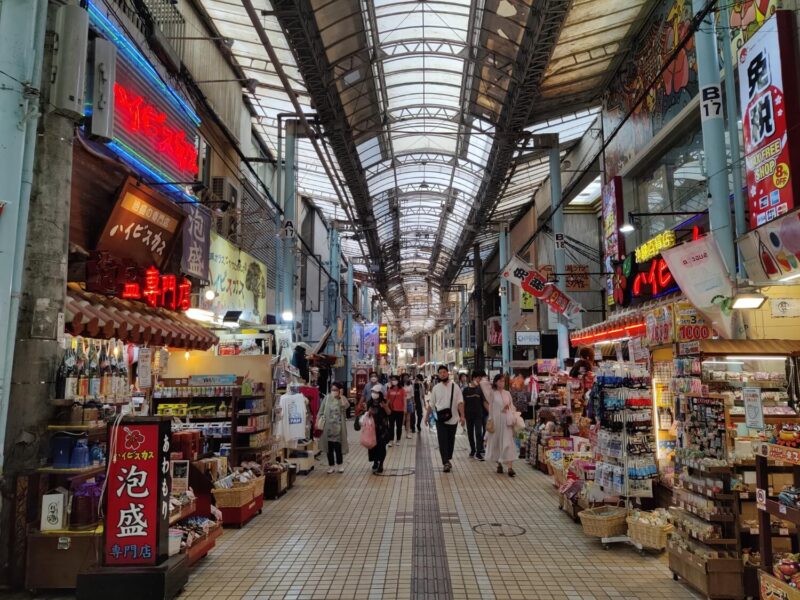
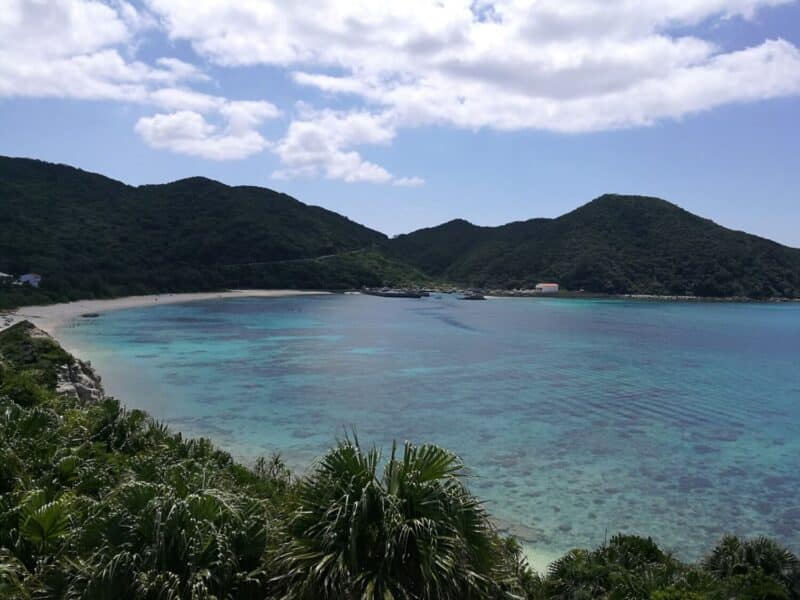
How to get around Okinawa
Okinawa is an island that should be explored if you can. From its bustling capital city to its peaceful beaches and beautiful natural landscapes, there is a lot to see across the island. However, Okinawa has yet to be blessed with the Shinkansen, so getting around isn’t quite as easy as it is in mainland Japan. Don’t let this put you off seeing more of the island though as there is still a great transport network to get you around efficiently and for a reasonable price. Here is a guide on how to get around in Okinawa:
Monorail in Naha – The Monorail in Naha is a great way to get around the city. It’s easy to use, efficient and reasonably priced. The Monorail has one line with 19 stations which run from Naha Airport to Tedako-Uranishi from around 05:40 to 00:00 daily. Services vary in frequency depending on the time of day and whether it’s a weekday or weekend but depart around every 10-15 minutes. The fare depends on the number of stops travelled but starts from ¥230 ($1.75) for 1-2 stops to ¥370 ($2.75) for more than 15 stops. Tickets can be bought at the station at a machine or the desk or you can use an IC card from Okinawa or mainland Japan. IC cards can currently only be charged at the counter
Bus – Buses are the best way to get around Okinawa if you don’t want to or can’t hire a car during your visit. There are city buses, which cover routes with Naha city, and buses which cover routes throughout the island, as well as some smaller bus options across the island. Bus prices vary depending on the distance you travel but are generally quite reasonable. The Okinawa bus website provides details on local buses and longer limousine buses which can be a more comfortable way to travel long distances.
Taxi – Taxis can be a good option for getting around Okinawa, particularly if you’re in a group. They can be hailed from the road or taken from one of the ranks which are generally outside shopping malls or in busy tourist areas. You can also ask your hotel to call you a taxi. The fare is metered and starts at around ¥560 ($4.25) for the basic fare plus ¥70 ($0.55) for every km. If you travel on the expressway, you may have to pay the additional fare for the toll. In Okinawa, there are also sightseeing taxis which will take you on a longer, set tour. Again, these can be a great idea if you don’t want to hire a car but want to see some of the more hard-to-get-to attractions
Car Hire – One of the most popular ways to get around Okinawa is to hire a car and explore the island by yourself. Car hire prices are quite standard in Japan and there are many companies including OTS, Times, Nissan, Nippon and Toyota. There are several offices all over the island including at Naha Airport, Naha city and other major towns. It’s a good idea to get a rental including an ETC card which will allow you to use the expressway easier. Cars drive on the left side of the road in Japan and you are not allowed to drink any alcohol when driving. The expressway offers a quick and convenient way to get around the island while avoiding the majority of traffic
Ferry – While ferries won’t get you around the main island of Okinawa, they are the only way to see some of the smaller outlying islands that surround Okinawa. The main port on the island is Tomarin Port in Naha where express and regular ferries depart daily to the Kerama Islands, Aguni, Kume and the Daito Islands. Ferries also depart daily from Motobu, Toguchi and Unten Port to Izena, Iheya, Ie and Minna islands in the north. It’s best to check ferry times and routes at the counters at the ferry port or online, as schedules can vary throughout the year and weather can cause cancellations or delays
Things to do in Okinawa
Okinawa is a fascinating island with a colourful history and diverse landscape. It is unlike anywhere else in Japan and is home to an array of things to see and do, most notably revolving around its beautiful seas. To help you plan what to do in Okinawa here is our compact list of the top 5 things to do in Okinawa:
Kokusai Dori in Naha – Naha’s main shopping street, Kokusai Dori translates to International Street. It is one of the best places to shop, eat and soak up Okinawan culture on the island. This long road is home to countless souvenir shops, and restaurants and features many covered markets which start on the street
Churaumi Aquarium – This aquarium is part of Okinawa’s Ocean Expo park in Motobu and was the largest aquarium in the world when it opened in 2005. The aquarium is spread over 4 floors and features a large tank containing over 7,500,000 litres of water which represents Okinawa sea life including whale sharks and manta rays. This is one of the top attractions in Okinawa and is not to be missed. Tickets cost ¥2180 ($16.50) per adult
Kerama Islands – Take a day trip from the main island to the Kerama Islands, a series of small islands off the coast of Okinawa which are sparsely populated and home to some of the best beaches in Japan. Ferries run from Naha port to both Tokashiki and Zamami Island daily
America Village – Okinawa’s long history with America has paved the way for the American Village, an American-styled complex located on the sea in Chatan. The village features many restaurants including some well-known American chains as well as shops, a beach and an entertainment complex
Diving & Snorkelling – One of the best ways to enjoy Okinawa is under the sea. The sub-tropical islands are home to an array of tropical sea life including octopus, parrot fish, manta rays, whale sharks and turtles. Many companies run daily diving trips for both experienced and inexperienced divers and snorkelling gear can be bought or rented across much of the island
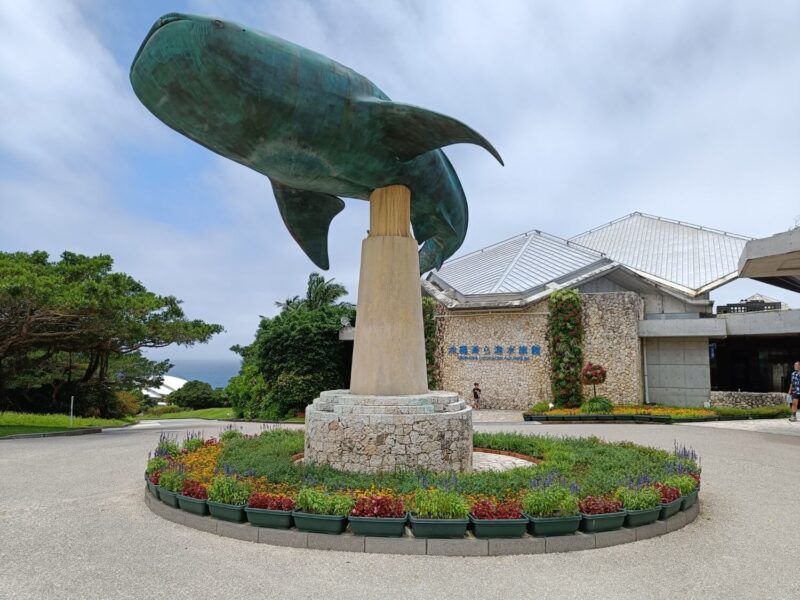
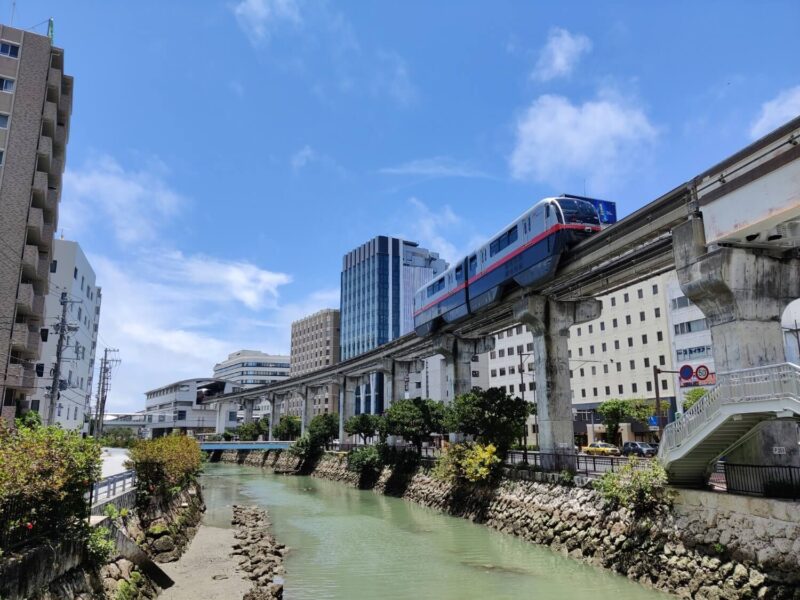
What to eat in Okinawa
Okinawa island is home to many restaurants. There are around 2,500 restaurants in Naha alone and many more across the other towns and cities on the island. Alongside an array of Japanese restaurants, Okinawa has a great mix of restaurants to choose from including Mexican, American, Thai, Vietnamese and European. There is something for everyone. While you’ll find many restaurants serving up more generalized Japanese fare, many restaurants in Okinawa specialise in Okinawan food, which is widely known to be one of the healthiest diets in the world. Here are our top picks of what to eat in Okinawa, Japan while you’re visiting:
Okinawan Soba – Similar to ramen, Okinawa Soba consists of thicker Okinawa Soba noodles in a broth flavoured with Konbu, Katsuobushi flakes and pork. The noodles are commonly topped with pork belly or boneless pork ribs and pickled ginger
Taco Rice – This Okinawan speciality consists of seasoned minced meat on rice with cheese, lettuce and tomato
Goya Champuru – This Okinawan stir fry dish commonly uses Goya (a bitter melon grown in Okinawa), tofu, vegetables, meat or fish and egg to create a simple, healthy meal that celebrates Okinawan ingredients
Rafute – A delicious Okinawan pork dish that uses soy sauce and brown sugar to stew pork belly until it is soft and tender. A must-order when in an Okinawan izakaya!
Purple Potato – The purple sweet potato is found in shops all over Okinawa and is a local staple. Alongside the potato itself, there are purple potato crisps, sweets and ice cream to be enjoyed
Money - Okinawa Travel Costs
The currency in Japan is the Japanese Yen (¥, 円 or JPY). Despite Japan’s reputation as a country of the future, cash is still the most common way to pay and many smaller shops, restaurants and bars will only take cash. Credit & Debit cards are usually accepted in larger stores and restaurants as well as chain restaurants, supermarkets and convenience stores. This applies to Okinawa too where cards will be accepted as most major stores and restaurants but you’ll need cash for smaller establishments. It’s wise to carry some cash with you at all times and it’s common for Japanese people to carry around $100 worth with them at all times. If you’re using a foreign credit or debit card, you can easily use ATMs within Japanese convenience stores (7-11, Familymart & Lawsons) to withdraw cash but do note that they always charge a small fee. Tipping is not required in Japan, including in Okinawa, and can even be considered rude in some cases. Like much of Japan, Okinawa prices can be very reasonable but will vary greatly depending on your accommodation choice and activities. Eating out can be very affordable if you stick to local, smaller restaurants and avoid some of the tourist driven course menus and chains, likewise, smaller hotels will cost less than large resorts on the island. Here’s a quick guide for what you can expect to pay (per person) in Okinawa for:
A local draught beer – ¥400 – ¥650 ($3-$5)
A coffee – ¥400 – ¥650 ($3-$5)
An onigiri (Japanese rice ball snack) – ¥100 – ¥200 ($0.75 – $1.50)
Budget restaurant meal – ¥900 – ¥1500 ($7 – $12)
Mid-range restaurant meal – ¥2000 – ¥4000 ($15 -$30)
High-end restaurant meal – ¥5000 + ($38+)
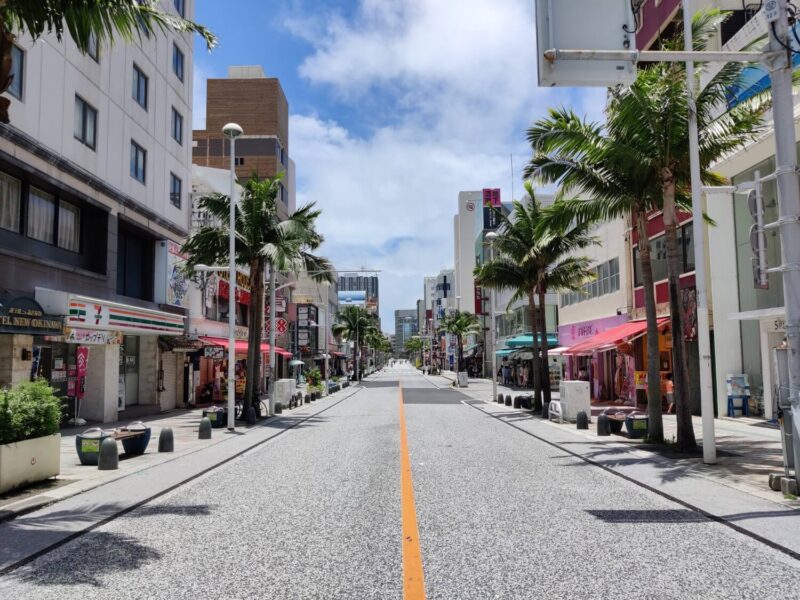
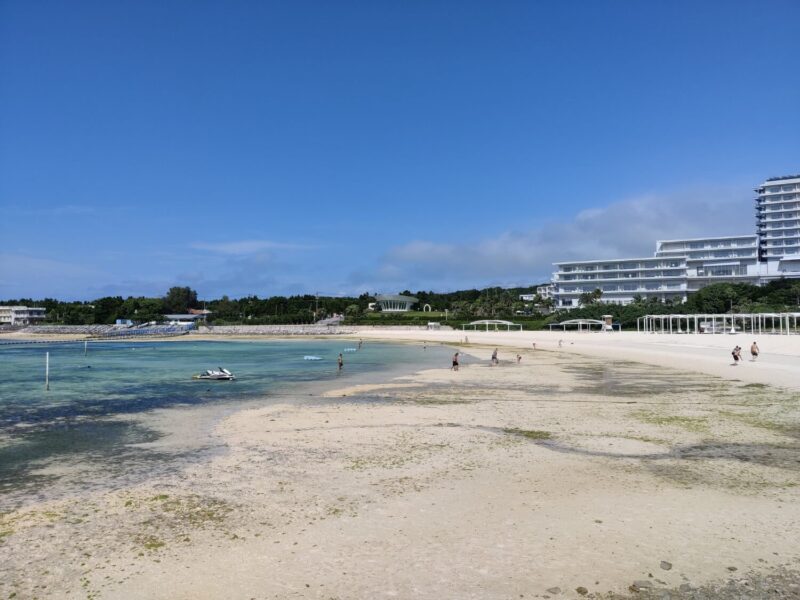
When to go to Okinawa and for how long
Okinawa temperatures stay above 15°C year round, making it the ideal destination in Japan to visit any time of year. However, there are certainly better times to visit than others. Early May to early June is the rainy season in Okinawa and visitors are likely to experience much more rain in this period, making beach trips and planning days out harder than usual. July and August are the typhoon season temperatures in these months can also be as high as 31°C, making sightseeing sweaty and uncomfortable. August is also a common month for Japanese domestic tourism due to the school holidays and Obon so prices for accommodation and flights are likely to rise and popular beaches and tourist hotspots in Okinawa can get very busy. The best time to visit Okinawa is from March to May or late September to December when prices are more reasonable, rain is less and temperatures are milder. The time to spend in Okinawa largely depends on where you’re staying and whether you plan to explore more of the island. We’d recommend a stay of at least 3 days in Naha to enjoy everything it has to offer plus some beach time but a trip of 5 days to a week is better if you want to explore more of the island and do a day trip to the Kerama Islands.
Local language and phrases
While Okinawa has a strong American influence and is popular with tourists, many small restaurants and shops speak only Japanese, so as with everywhere in Japan, it’s wise to learn a few key Japanese words and phrases before visiting, to help you get by and avoid any awkward situations. We’ve put together a list of Japanese words and phrases that might be useful in our Japan guide so make sure you take a look before going
Okinawa travel tips
– Okinawa main island, as well as the smaller islands are all very safe to visit and are safe for lone travellers, including lone females
– There are cafes and restaurants that cater to vegan, vegetarian and gluten-free diets but you’ll have to search them out
– The tap water is safe to drink in Okinawa
– Check out our general Japan guide for tips on Japanese customs and manners to follow while visiting Okinawa
Okinawa travel guide written in August 2022
This site uses affiliate links. When you click on a link and purchase an item, we may be compensated on qualifying purchases. However, this is at no extra cost to you. See our affiliate disclosure for further information.
Okinawa Walking Tour Videos And Maps
Check out our Youtube Channel for more Okinawa walking tours, and tours for other destinations too.
Naha Kokusai-dori Walking Tour
A walking tour video highlighting the sights and sounds of Kokusai-Dori, Naha’s International Street with an accompanying map
Naha Market Walking Tour
A walking tour video highlighting the sights and sounds of the Naha’s covered markets and pottery street with an accompanying map
Pin this Okinawa Travel Guide to save it for later!

